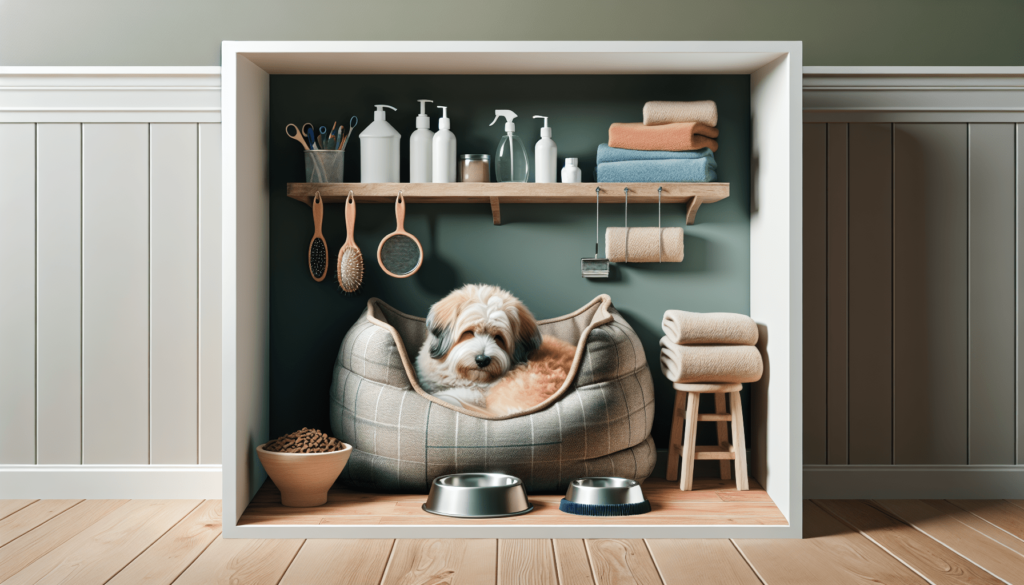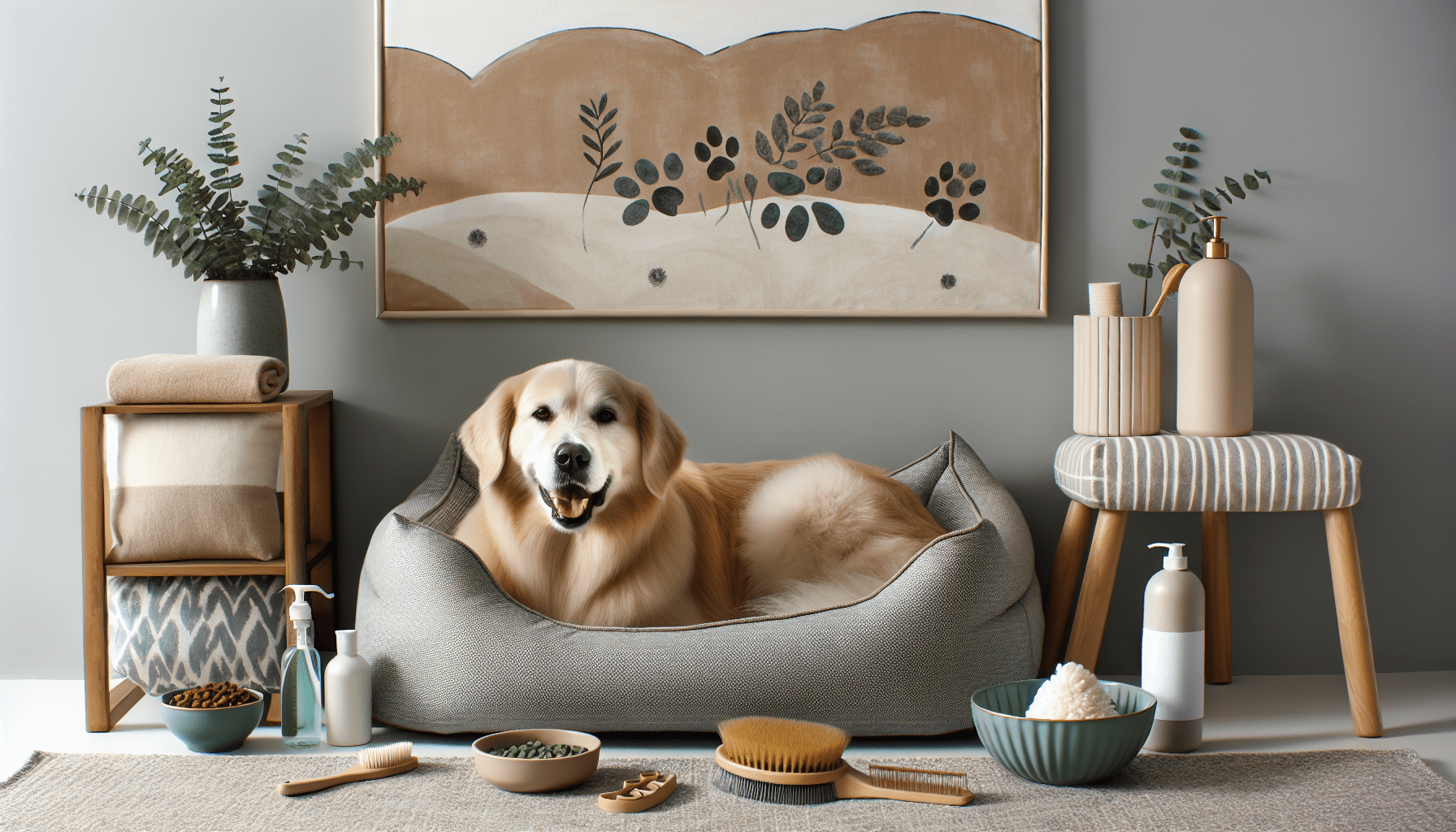Have you ever wondered how you can enjoy the companionship of a beloved pet without the distressing symptoms of allergies? Creating an allergy-friendly pet care routine is not only possible but also can be very rewarding. By adopting a comprehensive approach to managing both your environment and your pet’s hygiene, you’ll be able to enjoy all the benefits of pet ownership without the sneezes and sniffles. This guide is designed to help you navigate the delicate balance between pet love and allergy management in a friendly and informative manner.

Understanding Pet Allergies
What Causes Pet Allergies?
Pet allergies are primarily triggered by proteins found in a pet’s skin cells, urine, and saliva. When these proteins come into contact with your respiratory tract, they can cause allergic reactions. Cats and dogs are the most common culprits, but allergens can also come from other animals like rabbits and rodents. Knowing the specific allergens you react to is crucial in developing an allergy-friendly pet care routine.
Common Symptoms of Pet Allergies
Identifying allergy symptoms can help you take the necessary steps to alleviate them. Common symptoms include sneezing, runny or stuffy nose, itchy or watery eyes, coughing, itchy skin, and difficulty breathing. Understanding these signs can help you respond appropriately and seek further medical advice if needed.
Preparing Your Home Environment
Creating a Pet-Free Zone
Designating an area in your home where your pet is not allowed can significantly reduce your exposure to allergens. This might be your bedroom or another space where you spend a lot of time. By keeping one zone pet-free, you can have a sanctuary to retreat to when allergy symptoms flare up.
Choosing the Right Flooring and Furniture
Certain materials can harbor more allergens than others. Hard flooring like wood or tile is generally better than carpet, as it is easier to clean and doesn’t trap allergens. Similarly, opting for leather or other easily cleanable furniture instead of fabric can help minimize allergen accumulation.
Investing in Efficient Air Filtration
Air purifiers with HEPA filters can significantly reduce airborne allergens. Placing these in common areas where your pet spends a lot of time can help maintain cleaner air. Additionally, regularly servicing your HVAC system and using high-efficiency filters can contribute to an overall reduction in allergen levels.
Pet Grooming Habits
Regular Bathing and Brushing
Keeping your pet clean is key to reducing allergens. Regular bathing can help remove dander, while brushing your pet outside can prevent loose fur and dander from circulating in your home. Be sure to use pet-friendly grooming products that won’t irritate your pet’s skin.
Choosing Hypoallergenic Shampoos and Products
Choosing the right grooming products can make a significant difference. Hypoallergenic shampoos and conditioners are formulated to reduce skin irritation and dander production, making them beneficial for both your pet and your allergy management routine.
Cleaning Your Living Space
Vacuuming and Dusting Routine
Regular vacuuming with a machine equipped with a HEPA filter can help keep allergens in check. Dusting surfaces with a damp cloth instead of a dry duster can prevent allergens from becoming airborne. It’s a simple change that makes a substantial difference in maintaining an allergy-friendly environment.
Washing Pet Bedding
Your pet’s bedding can be a hotspot for allergens. Washing it frequently with hot water can help reduce allergens significantly. Consider using hypoallergenic laundry detergents to further decrease allergen risk.

Managing Your Health
Consulting an Allergist
If allergies persist despite your best efforts, consulting an allergist can provide you with specific strategies tailored to your symptoms. They may recommend medication or other interventions to help you manage your allergies more effectively.
Considering Medication or Immunotherapy
Medications such as antihistamines, decongestants, or nasal corticosteroids can help reduce symptoms, but it’s important to use them under medical supervision. Immunotherapy, or allergy shots, is a longer-term solution that can reduce your sensitivity to allergens over time and might be worth considering.
Pet-Specific Strategies
Choosing the Right Pets for Allergy Sufferers
Some pets produce fewer allergens than others. For instance, certain dog breeds like poodles or bichons frises are often recommended for their lower allergenic potential. Researching and selecting breeds known for being more allergy-friendly can be a crucial step.
Understanding Hypoallergenic Pet Breeds
While no breed is entirely hypoallergenic, breeds that produce less dander are sometimes labeled as such. Knowing the difference can help you make informed choices about which pet might be less likely to trigger your allergies.
Embracing a Long-Term Allergy-Friendly Routine
Patience and Persistence in Allergy Management
Creating an allergy-friendly pet care routine takes time and persistence. It’s about consistent efforts and being patient with the process. Over time, these efforts will yield a comfortable balance between enjoying your pet and minimizing allergen exposure.
Enjoying Your Pet Without the Sneezes
Once you’ve established an effective routine, you’ll find that life with your pet can be much more enjoyable. The bond you have with your pet doesn’t have to be sacrificed due to allergies, and with the above strategies, you can continue to build lasting memories together.
By following these steps and maintaining an optimistic approach, you can achieve an allergy-friendly lifestyle that both you and your pet will appreciate.
